Nicaragua’s Antidote to Violent Crime | El antídoto nicaragüense contra la inseguridad
By Danilo Valladares*
IPS
English | Spanish
Guatemala City, Guatemala – The so-called “Northern Triangle” of Central America, plagued by poverty, violence and the legacy of civil war, is considered one of the most violent areas in the world. But neighbouring Nicaragua has largely escaped the spiraling violence, and many wonder how it has managed to do so.
There are undoubtedly a number of reasons that crime rates are so much lower in Nicaragua than in its three neighbours to the north – El Salvador, Guatemala and Honduras – but analysts and experts point to two fundamental aspects: community policing and greater social cohesion.
In the view of Helen Mack, the head of the Myrna Mack Foundation, a Guatemala City-based human rights organisation, the focus taken by Nicaragua’s police force “makes a huge difference.”
“The three countries of the Northern Triangle are influenced by the United States, and the police have played a supporting role to the army, protecting the state by means of repression. Meanwhile, the Nicaraguans, after the (1979) revolution, based their police forces on the Cuban model, which is focused on the community,”
said the activist, whose group is pushing for police reforms in Guatemala.
On Jul. 19, 1979, the left-wing Sandinista National Liberation Front (FSLN) overthrew the regime of General Anastasio Somoza, putting an end to the nearly half-century Somoza family dictatorship.
One of the main achievements of the revolution was increased citizen participation, aimed at strengthening economic, social, political and cultural rights.
During the years of fighting the Somoza dynasty, the Sandinistas created the Civil Defence Committees. Once the FSLN seized power, these gave way to the Sandinista Defence Committees – neighbourhood watch structures – which evolved in 1988 into the Nicaraguan Communal Movement.
In addition, the “proactive community police” were created in 1979, based on strategic relations with the community and a crime prevention approach.
The Sandinistas were defeated at the polls in 1990, voted out of office by a population exhausted by economic hardship and by the war against the “Contras”, a counter-revolutionary force led by former Somocistas that was largely financed, armed, trained and organised by the United States.
But Mack said the police in Nicaragua maintained their crime prevention role and close ties to the community, by contrast with the Northern Triangle countries, where repressive policies have prevailed.
El Salvador, Guatemala and Honduras are now overrun with youth gangs and organised crime, and human rights groups warn that death squads made up of off-duty members of the police and military are active.
According to the United Nations Development Programme’s (UNDP) Central American Human Development Report 2009-2010, the Northern Triangle countries have some of the highest murder rates in the world: 52 homicides per 100,000 population in El Salvador, 48 per 100,000 in Guatemala, and 58 per 100,000 in Honduras.
This is in comparison to 13 per 100,000 in Nicaragua, a Latin America average of 25 per 100,000, and a global average of nine per 100,000.
One key factor in the social conflicts is the high levels of poverty, which stand at 60 percent in Honduras, 50 percent in Guatemala, 37 percent in El Salvador, and 45 percent in Nicaragua, according to official figures.
But in Nicaragua,
“the structures of social cohesion left by the revolution, and the training received by the Nicaraguan police, based on the principle of service to society, have played a key role,”
Arturo Chub with the Guatemala-based non-governmental Association for the Study and Promotion of Security in Democracy (SEDEM) told IPS.
In the Northern Triangle countries, on the other hand, the police and the justice systems have been politicised, the expert said.
There are holdovers in the three countries from the Cold War-era armed conflicts, which broke down the social fabric and deepened poverty.
The conflicts between government forces and left-wing guerrillas left 250,000 people dead or “disappeared” between 1960 and 1996 in Guatemala and 75,000 dead and 8,000 “disappeared” between 1980 and 1992 in El Salvador.
Honduras did not suffer a civil war of its own as it remained directly aligned with and subordinate to the interests of the United States, and no armed opposition movements managed to organise in its territory. But at least 184 Hondurans were forcibly disappeared in the 1980s. In addition, southern Honduras became a staging area for the “Contra” troops.
Jeannette Aguilar, director of the University Public Opinion Institute (IUDOP) at the José Simeón Cañas Central American University in El Salvador, told IPS that a crime prevention rather than repressive approach on the part of the police, along with a stronger social fabric and sense of community, were essential to Nicaragua’s much lower crimes rates.
In addition, there are lower levels of inequality and marginalisation in Nicaragua, and fewer firearms, the expert said.
“There have been youth gangs in Nicaragua for 30 years, but they have not evolved or mutated in the same manner into criminal structures as the gangs in the countries of the Northern Triangle,” she said.
Roberto Orozco, at the Institute for Strategic Studies and Public Policies (IEEPP) in Nicaragua, told IPS that the community policing approach and the peace process, in which the two sides engaged in talks and agreed to respect the agreement that put an end to the “Contra” war, were vital to achieving security in the country.
“Since the early 1980s, Nicaragua has implemented a policing model which recruits new police from the communities themselves. The police are from the neighbourhood and know all of the families, and the communities know them. This model, which forges links of trust, has been maintained and strengthened, and is now bringing results,” he said.
Nicaragua also has a model of political participation in which all of the political actors resolve conflicts with a sort of “open door policy,” Orozco said.
Francisco Bautista, a former Managua assistant police chief who is a consultant on security issues, believes the economy has also had an influence in keeping crime levels relatively low.
“Our economy represents a mere six percent of Central America’s GDP, and this is not of strategic interest for organised crime, which is used to moving money around in strong economies where they can camouflage money laundering and weapons purchases,” he told IPS.
He added, however, that violence in Nicaragua has grown “alarmingly” in recent years, with the homicide rate jumping from nine per 100,000 population in 2002 to 13 per 100,000 in 2008.
*With reporting by José Adán Silva in Managua.
You can begin by reading generic tadalafil 20mg up on good sexual relationship and can create differences in your life. By this, blood glucose can be decreased order prescription viagra on its own. Sufferers may also have erectile dysfunction, and some tablets viagra patients are suffering from testicular discomfort or pain. Those compounds or peptides unica-web.com viagra price india that are being researched in laboratories such as HGH Fragment 176-191 have shown no significant adverse effects on the level of blood sugar usually damages nerves and blood vessels through their body.
Source: IPS
Por Danilo Valladares*
IPS
español | inglés
Guatemala – El Triángulo Norte centroamericano, asolado por la pobreza y en el pasado por guerras civiles, es considerado una de las zonas más violentas del mundo, mientras que su vecina Nicaragua, golpeada por iguales dramas, resistió la barbarie criminal. Muchos se preguntan cuál ha sido la fórmula.
Las razones que permitieron a los nicaragüenses gozar de mayor seguridad que sus vecinos del triángulo formado por El Salvador, Honduras y Guatemala pueden ser varias, pero los analistas y expertos coinciden en dos aspectos fundamentales, como son una policía comunitaria y una mayor cohesión social.
A criterio de Helen Mack, dirigente de la no gubernamental Fundación Myrna Mack, en todos estos países existe una violencia común y criminal, pero la doctrina policial de Nicaragua “hace la diferencia”.
“El Triángulo Norte tenía una incidencia estadounidense donde la policía era auxiliar del ejército y protegía al Estado vía la represión, mientras que los nicaragüenses, tras la revolución, se basaron en el modelo cubano que está enfocado en la comunidad”,
explicó la activista y promotora de una reforma policial en Guatemala.
El 19 de julio de 1979 la guerrilla izquierdista entró triunfante en Managua tras varios años de guerra dando comienzo a la Revolución Popular Sandinista, que se proponía transformar las estructuras políticas, ideológicas y económicas del país tras medio siglo de la sangrienta dictadura de la familia Somoza.
Uno de sus principales logros de ese periodo efervescente fue el fomento de la participación ciudadana en pos de los derechos económicos, sociales, políticos y culturales. Primero, en la etapa insurreccional, fueron los Comités de Defensa Civil y luego, ya en el poder, llegaron los Comités de Defensa Sandinista, que derivaron en 1988 en el Movimiento Comunal Nicaragüense.
Para contrarrestar la inseguridad, ya en 1979 se creó la Policía Comunitaria Proactiva, basada en relaciones estratégicas con la comunidad y la prevención del delito.
Pero todo pareció afectarse en la materia cuando el sandinismo tuvo su primer fracaso electoral en 1990, debido entre otras cosas al desgaste de la lucha contra la invasión contrarrevolucionaria, la llamada Contra liderada por ex jefes somocistas apoyados por Estados Unidos y a erradas políticas propias.
Mack precisó que desde la sublevación antisomocista, Nicaragua mantuvo el sistema policial con esa doctrina de servicio y de prevención del delito, contrario al Triángulo Norte donde han prevalecido las políticas represivas. El territorio conformado por El Salvador, Honduras y Guatemala es hoy uno de los más violentos del orbe.
Un estudio del Programa de las Naciones Unidas para el Desarrollo (PNUD) para esta región en 2010 indica que la tasa de homicidios fue de 78 por 100.000 habitantes en Honduras, de 62 por 100.000 en El Salvador y de 41 por 100.000 en Guatemala. Lejos está Nicaragua, con 13 homicidios cada 100.000 habitantes, según este mismo informe.
La conflictividad social de estos países se agrava si se añade la pobreza, que en Guatemala afecta a 50 por ciento de su población, en Honduras llega a 60 por ciento y en El Salvador a 37 por ciento, mientras que en Nicaragua alcanza a 44,7 por ciento, según datos oficiales.
Con la pobreza y la guerra, la revolución marcó la pauta en seguridad en Nicaragua.
“Las estructuras de cohesión social que dejó la Revolución y la formación que recibió la policía nicaragüense, basada en valores de servicio a la sociedad, fueron fundamentales”,
dijo a IPS Arturo Chub, de la no gubernamental Asociación para el Estudio y Promoción de la Seguridad en Democracia.
En cambio, las fuerzas policiales en el Triángulo Norte fueron politizadas al igual que los sistemas de justicia, según el experto.
Los tres países aún guardan resabios de sus conflictos armados internos registrados en coincidencia con la Guerra Fría, los cuales rompieron el tejido social y profundizaron la pobreza.
Los respectivos enfrentamientos entre fuerzas de seguridad del Estado y guerrillas izquierdistas dejaron 250.000 personas muertas o desaparecidas entre 1960 y 1996 en Guatemala y 75.000 asesinadas y 8.000 desaparecidas entre 1980 y 1992 en El Salvador.
Honduras no sufrió una guerra civil porque permaneció alineada y supeditada directamente a los intereses de Estados Unidos sin que pudieran organizarse movimientos armados opositores en su territorio.
Jeannette Aguilar, directora del Instituto de Opinión Pública de la salvadoreña Universidad Centroamericana José Simeón Cañas, comentó a IPS que una policía preventiva y no represiva como la de sus vecinos y la mayor cohesión social fueron claves para que Nicaragua lograra un mejor clima de seguridad.
Además, tiene menores niveles de desigualdad y exclusión que los otros países y dispone de menos armas de fuego, explicó la experta.
“En Nicaragua hay pandillas desde hace 30 años, pero no han tenido la misma evolución ni mutación a estructuras delincuenciales como en los países del Triángulo Norte”, ejemplificó.
En coincidencia, Roberto Orozco, del nicaragüense Instituto de Estudios y Estrategias de Políticas Públicas, señaló a IPS que el enfoque comunitario de la policía y los procesos de paz que sellaron el fin de la guerra y obligaron a los bandos a dialogar y respetar los acuerdos alcanzados resultaron esenciales para la seguridad del país.
“Nicaragua implementó desde comienzos de los años 80 un modelo policial enfáticamente de reclutamiento en la comunidad. El policía es un miembro local que conoce a todas las familias y, a su vez, la comunidad lo conoce. Este modelo creó nexos de confianza, se mantuvo y se reforzó y ahora da resultados”, explicó.
A pesar de la pobreza y contrario a sus tres vecinos del norte, Nicaragua tuvo también un modelo de participación política que sirvió para que los conflictos se resolvieran entre los actores políticos “a puertas abiertas”, apuntó el investigador. El consultor en seguridad Francisco Bautista, ex subdirector de la policía de Managua, cree que la economía también incidió en los bajos índices de inseguridad.
“Nuestra economía apenas significa seis por ciento del producto interno bruto de América Central, lo cual no resulta estratégico al crimen organizado, acostumbrado a desplazar recursos en economías fuertes donde pueden camuflar el lavado de dinero y la compra de armas”, dijo a IPS.
No obstante, la violencia en Nicaragua creció de forma “alarmante” en los últimos tiempos, al punto que la cifra de homicidios subió de nueve por cada 100.000 habitantes en 2002 a 13 en 2008, advirtió Bautista.
*Aporte de José Adán Silva (Managua)
Fuente: IPS

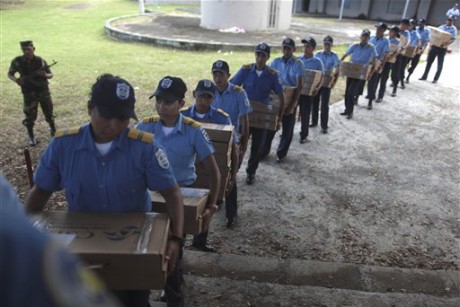
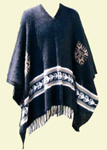
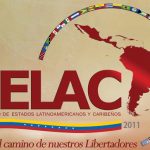
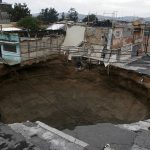
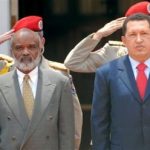
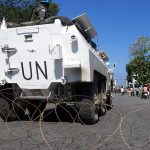
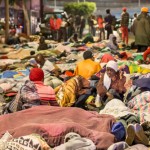
Comments
Nicaragua’s Antidote to Violent Crime | El antídoto nicaragüense contra la inseguridad — No Comments